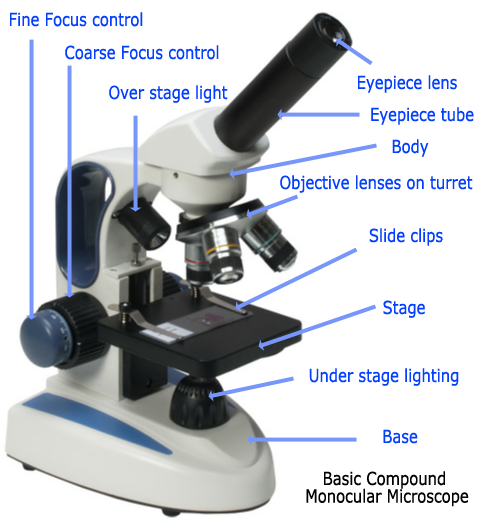|
An Introduction To Light Microscopy For Younger People and Beginners |
|||
|
The Microscope |
|||
|
In addition to knowing the key points when purchasing a microscope for the first time, it is an advantage to understand a basic or 'starter' level microscope's parts. The microscope is focused using two controls: coarse adjustment and fine adjustment. The eyepiece lens compounded with the objective lens provides the power of magnification, so a 10x eyepiece and a 40x objective will magnify 400 times. A microscope may have 2, 3, or 4 objectives
lenses mounted in a turret that turns. This allows for selection of different powers of magnification. Typical powers for objectives are x4, x10, x40, x100. Eyepieces are normally 5x, 10x or 20x. Most microscope retailers will offer eyepieces as accessories purchasable separately, except for the initial one provided with the microscope. |
 |
||
| << PREVIOUS | NEXT >> | ||